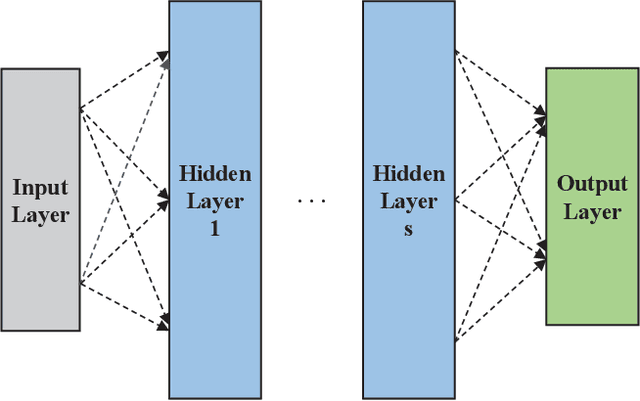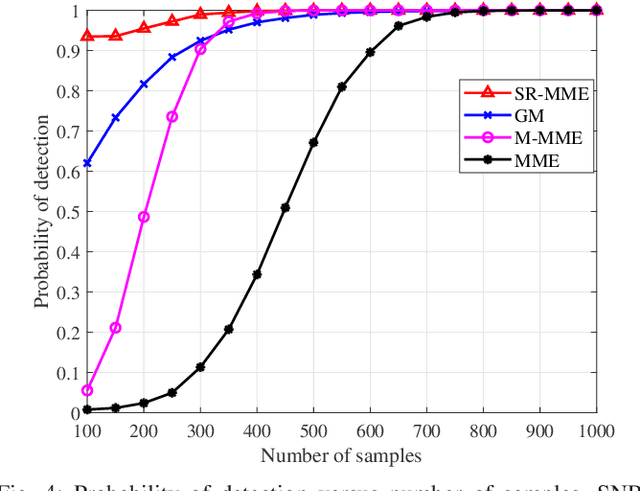Da Tian
Machine Learning Methods for Inferring the Number of Passive Emitters via Massive MIMO Receive Array
Mar 02, 2022



Abstract:To improve the efficiency and accuracy of direction finding with massive MIMO receive array, it is necessary to determine the specific number of signal emitters in advance. In this paper, we present a complete DOA preprocessing system for inferring the number of passive emitters. Firstly, in order to improve the accuracy of detecting the number of signals, two high-precision signal detectors, square root of maximum eigenvalue times minimum eigenvalue (SR-MME) and geometric mean (GM), are proposed. Compared to other detectors, SR-MME and GM can achieve a high detection probability while maintaining extremely low false alarm probability. Secondly, if the existence of emitters is determined by detectors, we need to further confirm their number, that is a problem of pattern classification. Therefore, we perform feature extraction on the the eigenvalue sequence of sample covariance matrix to construct feature vector and innovatively propose a multi-layer neural network (ML-NN). Additionally, the support vector machine (SVM), and naive Bayesian classifier (NBC) are also designed. The simulation results show that the machine learning-based methods can achieve good results in signal classification, especially neural networks, which can always maintain the classification accuracy above 70\% with massive MIMO receive array. Finally, we analyze the classical signal classification methods, Akaike (AIC) and Minimum description length (MDL). It is concluded that the two methods are not suitable for scenarios with massive receive arrays, and they also have much worse performance than machine learning-based classifiers.
 Add to Chrome
Add to Chrome Add to Firefox
Add to Firefox Add to Edge
Add to Edge